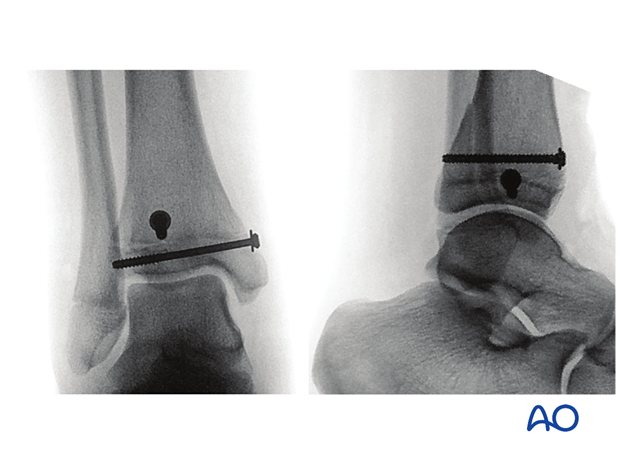Open reduction; screw fixation
1. General considerations
Introduction
The triplane fracture type typically occurs in older children when physeal closure is incomplete.
Displaced articular fractures require an open approach, with anatomical reduction to restore the articular surface.
A CT scan is recommended to identify the fracture pattern and determine the screw trajectory.
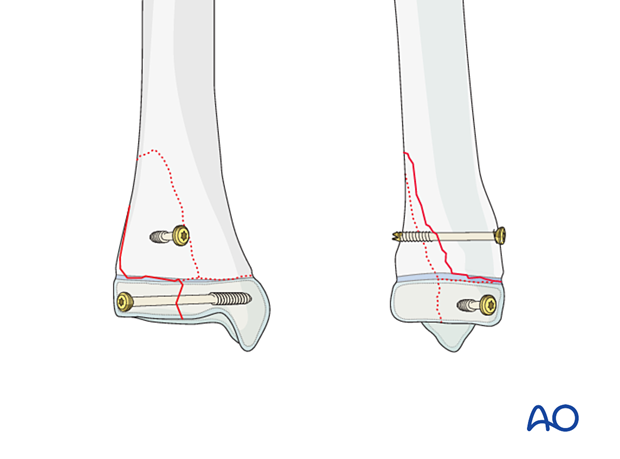
Axial cuts at the level of the screws
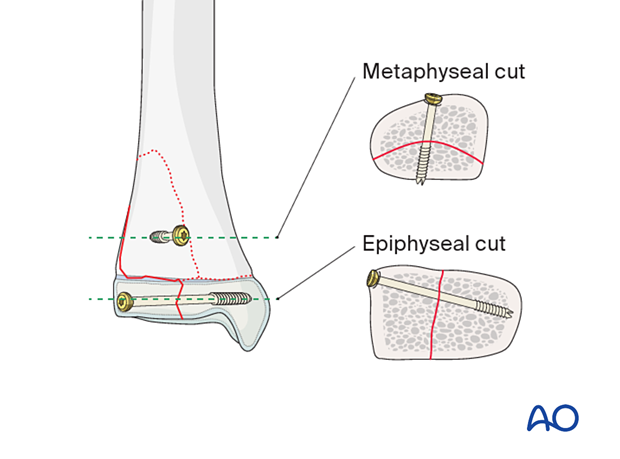
Associated fibular fracture
A fibular fracture often reduces with reduction and fixation of the tibial fracture and does not require separate consideration.
If the alignment and stability of the fibular fracture are unsatisfactory after fixation of the tibial fracture, surgical treatment of the fibular fracture is also required.
If the distal tibial fracture is highly comminuted, fixation of the fibular fracture may add to overall stability.
Treatment goals
Anatomical restoration of these fractures reduces the risks of malunion and subsequent osteoarthritis.
2. Instruments and implants
Appropriately sized cannulated or noncannulated lag screws (2.7, 3.5, or 4.0 mm) can be used.
The following equipment is used:
- Cannulated screw set with guide wire
- Drill
- Image intensifier
- Reduction forceps
- Dental pick or hook

3. Patient preparation and approaches
Patient positioning
Place the patient in a supine position on a radiolucent table.
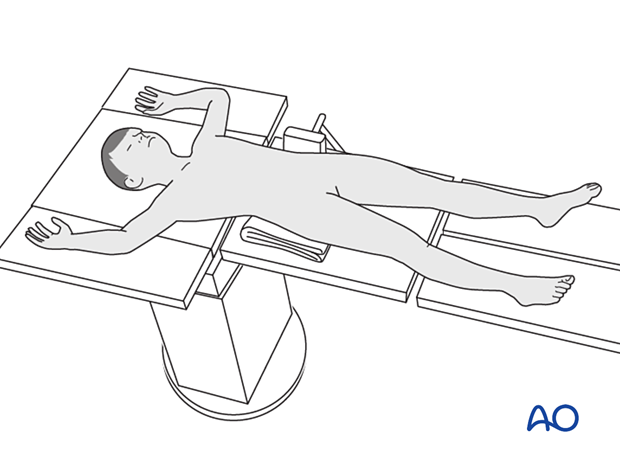
Approaches
These fractures are typically treated through an anterolateral approach to remove any block to reduction and stabilize the epiphyseal fracture.
If the anterior epiphyseal fracture line extends medially, an anteromedial approach may be chosen.
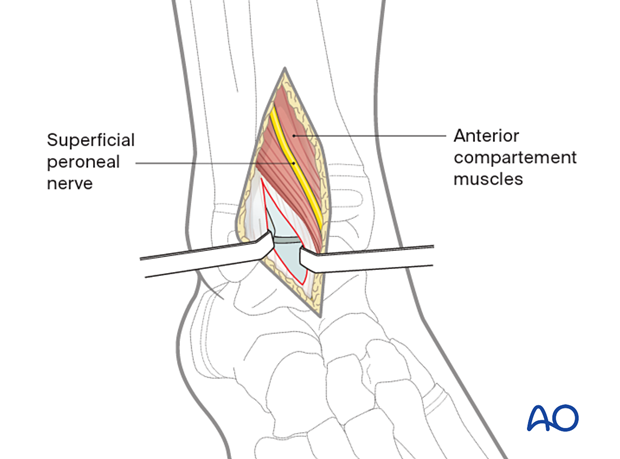
4. Order of reduction and fixation
The order of reduction and fixation depends on surgeon’s preference and varies between a two-part and three-part fractures.
It is recommended that the articular surface and physis are initially reduced and fixed, followed by indirect reduction of the metaphyseal fracture.
5. Reduction
Remove blood clots, loose fragments, soft callus, and entrapped periosteum.
Reduce the fracture with gentle manipulation, a dental pick, or reduction forceps.
Temporarily stabilize the fracture with K-wire(s).
Confirm anatomical reduction of the articular surface visually and of the physis and metaphysis with an image intensifier before screw insertion.
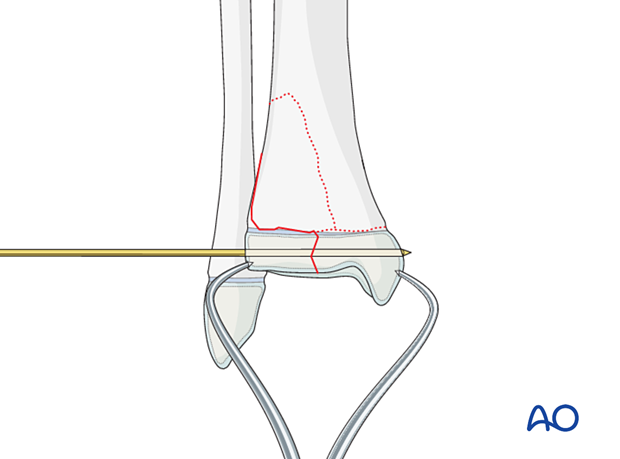
6. Fixation
Fixation of a two-part fracture
Insert lag screws in the direction determined by the preoperative CT scan.
For simple two-part triplane fractures, begin with reduction and fixation of the articular fracture.
The epiphyseal screw is usually placed from the lateral side of the epiphysis and runs parallel to the physis, perpendicular to the fracture line. Some fracture patterns require an epiphyseal screw from the medial side to achieve this.
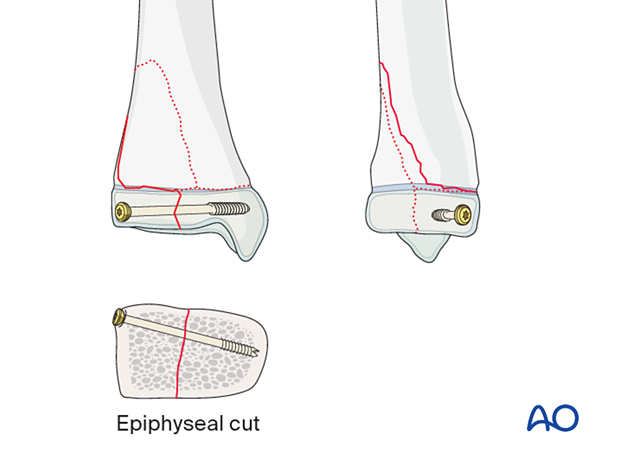
The metaphyseal fracture is usually fixed with an anterior to posterior screw.
If the fracture fragments are sufficiently large, two screws may be used.
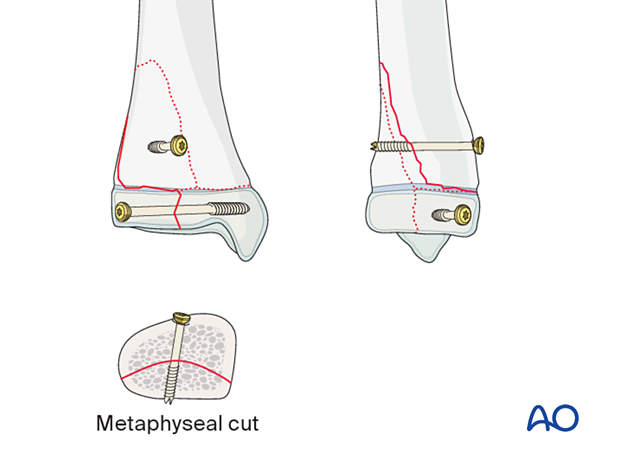
Final construct of a three-part fracture fixation
In this example, the anterior component of the epiphyseal fracture is stabilized with a lateral to medial epiphyseal screw. The posterior part of the epiphyseal fracture is indirectly reduced and stabilized with a metaphyseal screw.
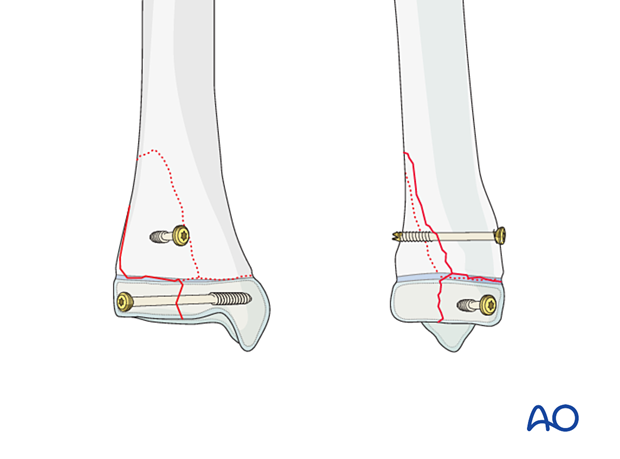
Axial cuts at the level of the screws
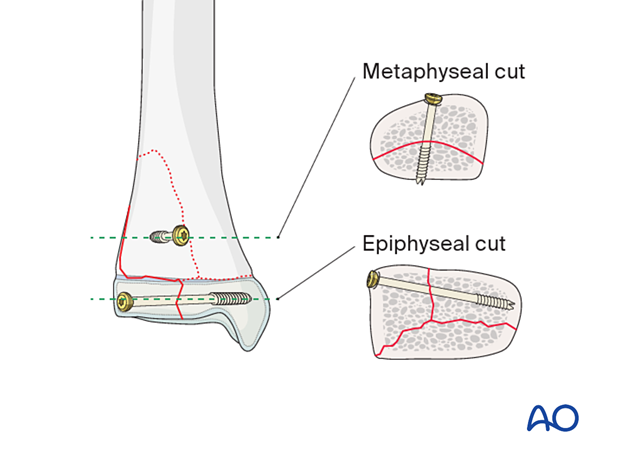
7. Fibular fracture management
Most fibular fractures do not require treatment. Indications for fixation include:
- Augmentation of the stability of tibial fracture fixation
- Significant displacement of the fibular fracture
The type of fracture pattern dictates the method of fixation of the fibular fracture.
In a younger child, these fractures may be fixed with K-wires in a standard manner. Multiple passes of the K-wire through the physis should be avoided.
In an older patient with a closing physis, these fractures may require plate fixation.
If screws are inserted on both sides of the physis, compression should be avoided and the periosteum and perichondral ring not be disturbed. To protect the perichondral ring, a dissector or elevator may be used to offset the plate during screw insertion. The plate should be removed soon after the fracture has healed.
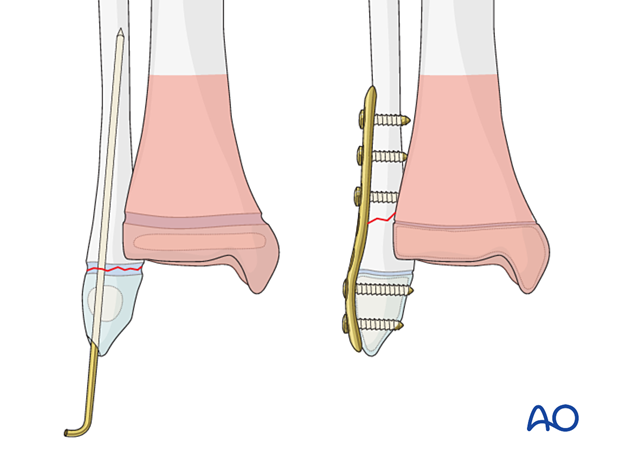
8. Final assessment
Recheck the fracture alignment and implant position clinically and with an image intensifier before anesthesia is reversed.
Confirm stability of the fixation by moving the ankle through a range of dorsi/plantar flexion.
9. Immobilization
A molded below-knee cast or fixed ankle boot is recommended for a period of 2–6 weeks as the strength of fixation may not provide sufficient stability for unrestricted weight bearing.
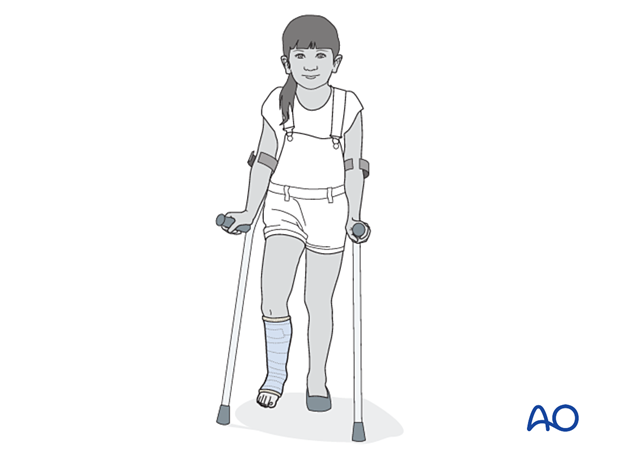
10. Aftercare
General considerations
Protected weight-bearing for 3–4 weeks is essential.

Pain control
Patients tend to be more comfortable if the limb is splinted.
Routine pain medication is prescribed for 3–5 days after surgery.
Neurovascular examination
The patient should be examined frequently to exclude neurovascular compromise or evolving compartment syndrome.
Discharge care
Discharge follows local practice and is usually possible within 48 hours.
Follow-up
The first clinical and radiological follow-up is usually undertaken 5–7 days after surgery to check the wound and confirm that reduction has been maintained.
Cast removal
A cast or boot can be removed 2–6 weeks after injury.
Mobilization
After cast removal, graduated weight-bearing is usually possible.
Patients are encouraged to start range-of-motion exercises. Physiotherapy supervision may be required in some cases but is not mandatory.
Sports and activities that involve running and jumping are not recommended until full recovery of local symptoms.
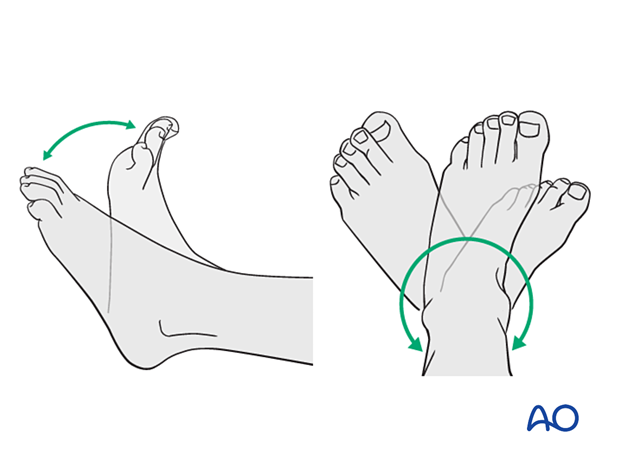
Implant removal
Implant removal is not mandatory and requires a risk-benefit discussion with patient and carers.
11. Cases
Case 1
AP, lateral, and mortise x-rays of a triplane fracture
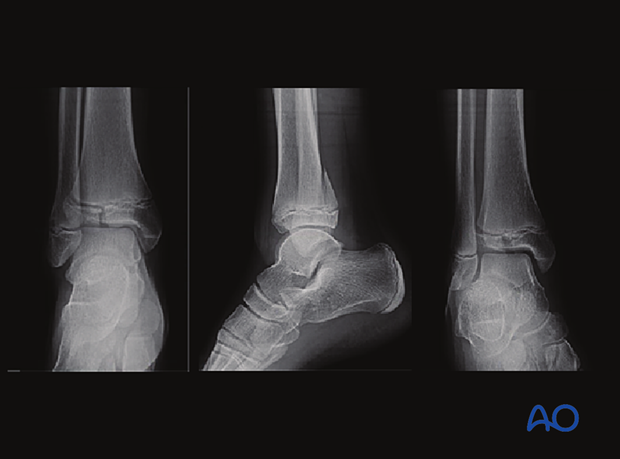
2D-CT images at the level of the epiphysis and metaphysis. The left image is at the epiphyseal level and shows a three-part fracture pattern.

In this example, the epiphyseal fracture is stabilized with two screws and the metaphysis with a single screw.
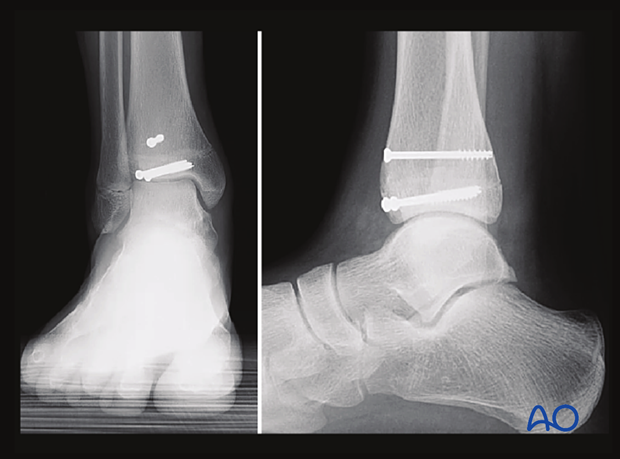
Case 2
AP, lateral, and mortise x-rays of a triplane fracture
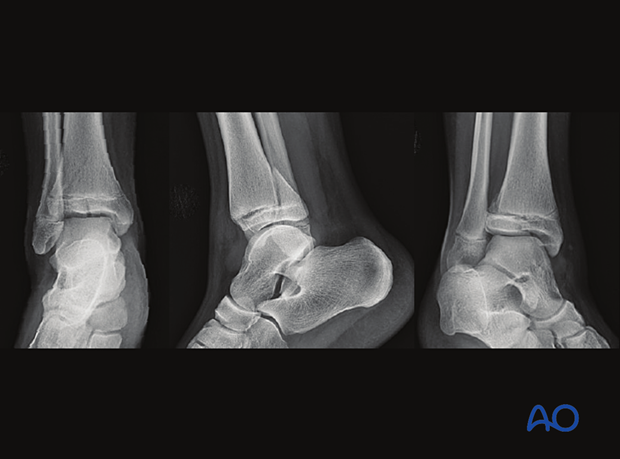
In this example, the epiphyseal and metaphyseal fracture was stabilized with a screw each.
